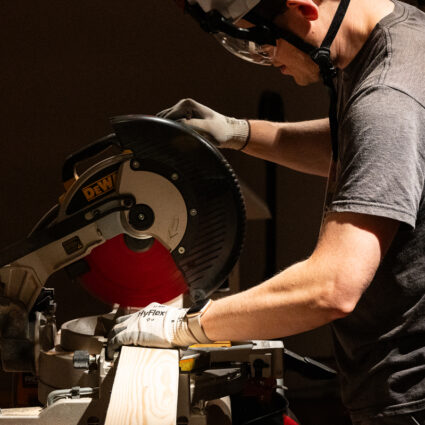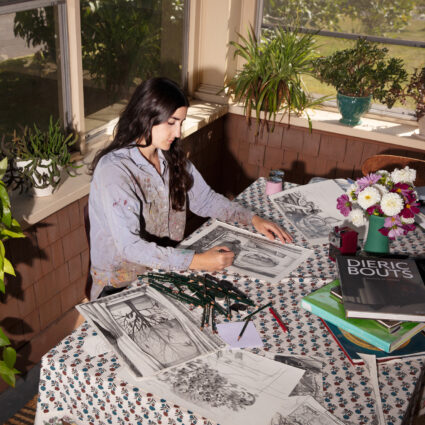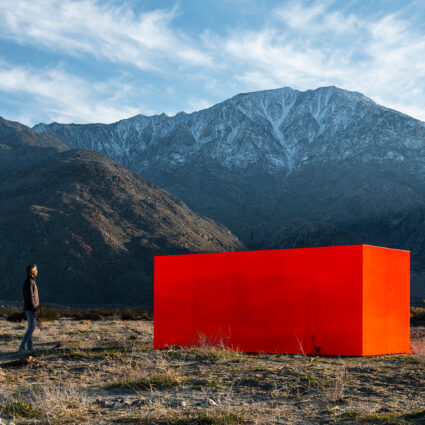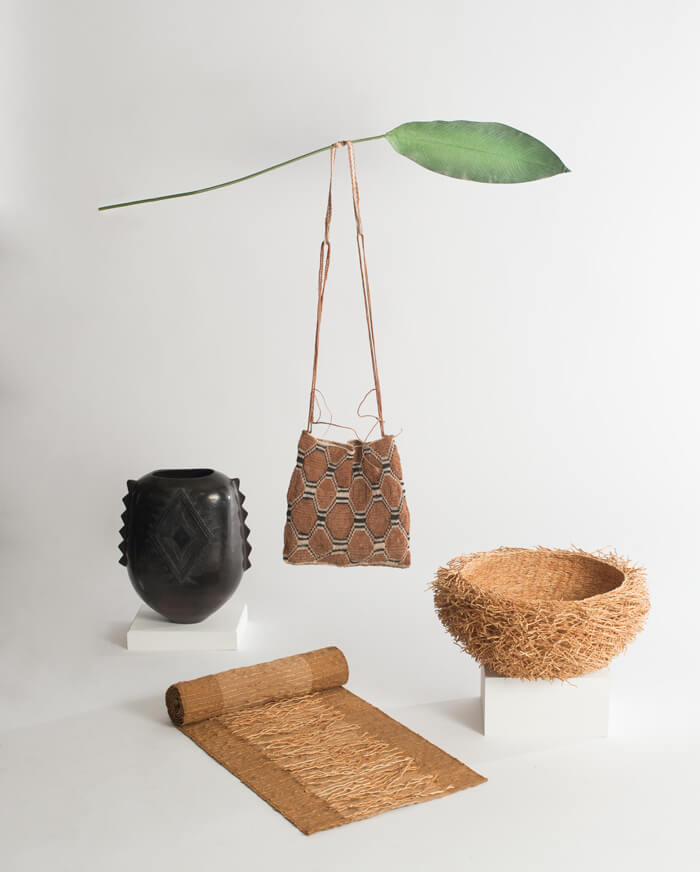
This year the International Folk Art Market celebrates its fifteenth birthday. IFAM first began in 2004 with sixty-one artists from thirty-six countries. Now, that number has more than doubled to 162 artists from fifty-three countries. Officially, the vending is two days long, but now the whole week preceding the selling has been absorbed into the festivity, acting as a kind of primer to hype prospective attendees on the value of folk art. Talks, book signings, and art openings at various Santa Fe venues are only a few of the anticipated activities. But it is perhaps the artist procession on Thursday that properly rings in the spirit of IFAM, as the 162 participants advance through the Plaza bearing musical instruments, each designated by country and all wearing the dress of their respective cultural groups.
The official opening of IFAM takes place Friday evening with designer Donna Karan leading the “Wear Your Impact” initiative. For the first time in IFAM’s history, Karan will act as three patrons’ personal stylist, choosing wares from various booths (tickets are $2000 each and include concierge service) to put together a one-of-a-kind ensemble. By Saturday morning, Milner Plaza on Museum Hill will begin to flood with people, thousands mingling around booths as translators of multiple dialects stand by to render communication between parties from distant backgrounds. Here begins a new IFAM day, abounding in color, pattern, and texture like the swirling onion domes of St. Basil’s Cathedral in Red Square. In this prismatic field of vendors and their wares, one can buy jewelry, beadwork, basketry, carvings, ceramics, glasswork, metalwork, paintings, sculpture, textiles, and even musical instruments.
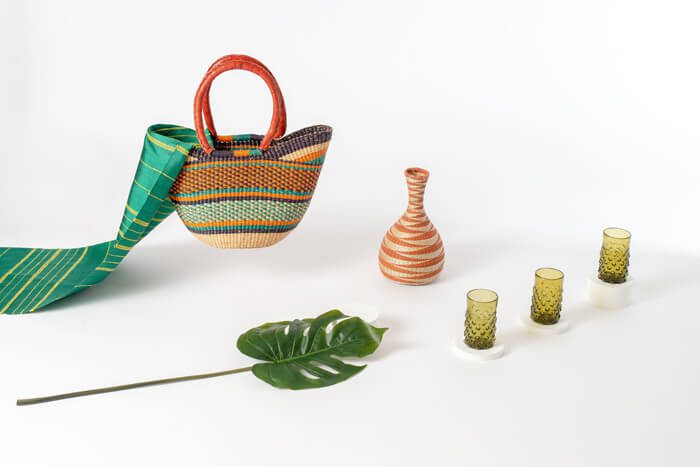
Artists: Families + Cooperatives
Mauruch, Porfirio Gutierrez tells me, has neither a Spanish translation nor a scientific name. A plant that produces a light green color, mauruch is known only by its Zapotec name. If I stop by his booth, he’ll show me. Gutierrez and his family are part of a minority movement in Oaxaca to use only natural dyes for the production of fiber arts. In the 1970s, he recounts, a more commercial market for Zapotec textiles began to emerge, “one not for indigenous people, but for tourists.” As a result, designs changed and textiles began to be mass produced with cheaper and faster commercial dyes. Gutierrez said that it only took about fifty years between the time commercial dyes were invented before they started to show up in Zapotec textiles. His family, including his sister Juana, have dedicated their lives to preserving a method of dyeing “impressively unique to Zapotec people.” Weaving, too, has roots: “Pre-Hispanic codices show ancestors weaving on backstrap looms with cotton fibers.” With the entrance of the Spanish in the Americas came wool and the standing loom, which the Gutierrez family uses. It’s all hybrid, a form of sincretismo. “We’re hoping,” he says, “that each piece has its own energy shared through its admirers.”
The alchemy of color connects Gutierrez to many others who naturally dye fibers. Gahaya Links Cooperatives, founded by Janet Nkubana and Joy Ndunguste, comprises around five thousand Rwandan women across fifty-two cooperatives, all of whom coil baskets by hand. “Everyone weaves in my country; it is an art taught in school and learned from grandparents.” Each basket has about thirty thousand stitches in hues that range from subtle pinks to deep indigo. To achieve the various colors, roots and other organic material, Ndunguste says, are intermixed: “beetroot is mixed with another root to make a chocolate color,” while dried coffee beans, bamboo leaves, and cinnamon also broaden the palette. Gahaya Links was founded after the 1994 genocide of the Tutsi in Rwanda that killed one million people. Women began trading coiled baskets for food, and thus the idea was born for a cooperative focused on generating income for those returning from refugee camps. Now, the baskets are a kind of national patrimony found in government buildings, hotels, and homes. There is also a high-end line that is produced for Macy’s and other American companies. According to Ndunguste, the women weave for themselves and for the market, spending their free time gardening or making uniforms for schools.
In Laos, the formulas for making colors are not written down. Women rely on their senses—especially sight, smell, and touch—to achieve the appropriate hues. Indigo, for instance, takes between three and five days to process. Ock Pop Tok, which translates to East Meets West, has produced stunning silk textiles since their founding in 1999 by a Laotian woman, Veomanee Douangdala, and a British woman, Joanna Smith. Based in Luang Prabang, the cooperative works with around fifteen ethnic groups throughout twenty-five villages in Laos (there are forty-nine officially recognized ethnic groups), in eleven out of the seventeen provinces. It can take up to six months to complete one piece, beginning with the tiny silkworm, whose cocoons are unraveled and boiled to remove a gummy protein called sericin. Then comes the dyeing and, only afterward, the weaving. Smith, who no longer participates in the production of the textiles, counts herself as a “master storyteller,” doing much of the organization’s outreach. Within the small French Colonial tourist town perched along the banks of the Mekong River, Ock Pop Tok has two brick and mortar locations.
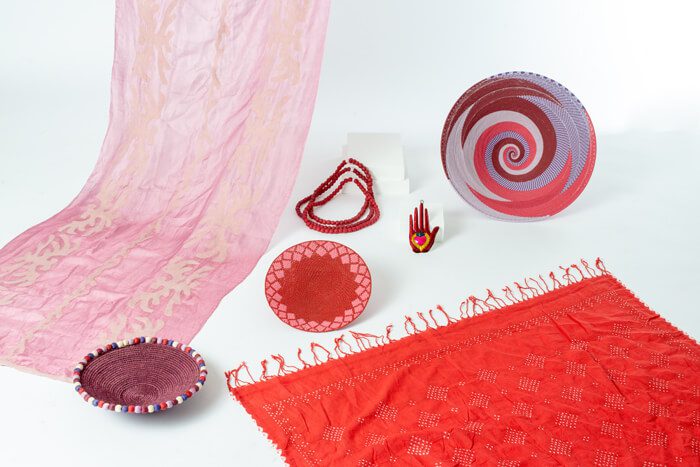
IFAM + Social Entrepreneurship
The impulse on IFAM’s part to enable social entrepreneurship, in short to help vendors make money to benefit their respective communities, is as strong as ever. That mission is writ large throughout. That plays into a bigger-picture philosophy of what is called “conscious consumerism,” a phrase IFAM uses often. In Keith Recker’s words, conscious consumerism is two-pronged: “it is the power of the Western consumer to turn the act of consumption into a process of pushing forward cultural appreciation,” as well as the “daily reward” of enriching our lives visually and tactilely with handmade objects. As a result, he believes, Western consumers will “feel the need to consume less.” When manufacturing industries have been defined by labor and human rights violations and craftsmanship lost along the way, to consciously consume is to re-circuit an otherwise exploitative set of relationships between manufacturer, laborer, and buyer. For Porfirio Gutierrez, that means researching what you’re buying before you make the leap of purchasing.
Often, social entrepreneurship has become a kind of salve for poverty, overpopulation, energy, food shortages, and lack of women’s rights in places where colonialism and imperialism have made their greatest impact
Entrepreneurship has long thrived in that paradigm. Even now, the word startup conjures a certain image of Silicon Valley millennials drinking meal replacement smoothies and working in dire competition. Joseph Schumpeter, a mid-century economist, surmised that the process of constantly improving on a market in such a way that old processes get thrown out for more novel ones results in “the gale of creative destruction.” But social entrepreneurship is supposed to differ to the extent that there is a certain kind of ethics involved that may not have otherwise been possible in a Fordist model of creation, where workers are merely cogs, “alienated,” in Karl Marx’s words, “from their own labor.”
In a social entrepreneurship model, the profit margin isn’t necessarily the first priority. Rather, social change and community wellbeing are at its core. Instead of not knowing who is making the pillow you bought at a big-box store, IFAM sees itself as promoting a face-to-face engagement between maker and consumer. “Every artist who shows up,” Recker says, “has made a decision to be there.” More than that, “you’re not stumbling into circumstances where someone might be selling a sacred artifact,” in other, less scrupulous markets. Everything is vetted through a rigorous two-part jurying process.
Often, social entrepreneurship has become a kind of salve for poverty, overpopulation, energy, food shortages, and lack of women’s rights in places where colonialism and imperialism have made their greatest impact (think extraction of resources, imposition of capitalist forms of exchange, along with entirely other bureaucratic systems and the subsequent divisions in race and class). As IFAM has pointed out, many of the artists come from developing countries where wages can be less than five dollars per day. Adekaye Adebajo describes the imbalance between the rich North and the Global South as a form of global apartheid of which these wages are one marker. For Gutierrez, making textiles is a way of sharing an artform and thus preserving the method of using natural dyes, but he’s also very pragmatic about what his family is doing: “As any culture deeply attached to what they make, it’s crucial to create an income; otherwise, we won’t eat.”
Over the previous fourteen years in existence, the Market has made twenty-eight million dollars, about ninety percent of which remains in the hands of the artists. As in any entrepreneurship model, prospective entrepreneurs, first time participants in the case of IFAM, require an investment, which Recker estimates is upwards of twenty thousand dollars. There are other returns, too. Khristaan Villela, Executive Director of the International Folk Art Museum, which is a partner of the Market, has mentioned that the “less tangible aspects” of IFAM include building institutional relationships with lineages of creators. Participants in IFAM have visited the museum’s vaults and identified previously unattributed works in the collection to relatives. The museum has also introduced weavers, from Peru to Oaxaca, to Irvin and Lisa Trujillo, “pioneers [in northern New Mexico] in using all-natural dyes.”
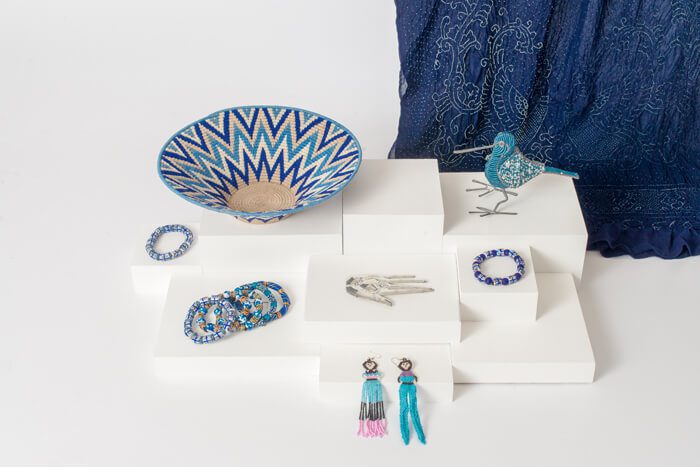
Folk art in the Marketplace
IFAM is a universe of chroma, of warp and weft, natural plant dyes, and transactional exchange. It is a fugitive universe, too, coming to be just a couple days out of the year and then tearing down. In its brevity, IFAM is nonetheless complex in both conceptualization and execution. But on the whole, the Market begs crucial questions about the role of folk art in our contemporary moment. As we embark on this fifteenth year of celebrating the union of cultures, we can also query how Culture (yes, with a capital C) enters the marketplace. Or better yet, we can query what it means for folk art to be made saleable at a U.S. venue.
According to Bernstein, though, entrepreneurship, and by extension social entrepreneurship, is inherently a Western model that has the capacity to eclipse other historical and contemporary forms of reciprocity.
It used to be the case that people—namely the leisure class—had to travel far and wide to collect objects of another culture, anthropologist Bruce Bernstein recounts. It’s a classic nineteenth-century model that bore what we know today as modern tourism. Where mainstream tourism now feels increasingly inauthentic and commercialized, folk art tourism fills a moral desire to buy objects that bear the imprint of a specific cultural identity. It fulfills a need, in other words, for authenticity, as Westernization of the world tends toward sameness.
According to Bernstein, though, entrepreneurship, and by extension social entrepreneurship, is inherently a Western model that has the capacity to eclipse other historical and contemporary forms of reciprocity. The potlatch practiced by Northwest Coast peoples is one example. The question that he raises is along the lines of: what happens when we take world cultures who have vastly diverse knowledge systems and ways of exchanging goods (bartering, for instance) and absorb them into a wholly other economy where their craft becomes a commodity? And what happens when that commodity (say, a pot, for example) is the only thing they become identified with?
Other considerations revolve around patronage and those who make up the demographic of buyers—usually, but not always, the upper middle class. In that sense, conscious consumerism is a personal decision to buy ethically and sustainably, but sometimes it may not be a decision that all people can actually afford to make. And while buying folk art can be a profound experience, for some it may also only be skin deep. Here, meaningful cultural exchange may not be the outcome.
These are questions I often ask, even as I am also convinced of the savviness of folk art creators, who come from long lines of makers well-versed in the art of commerce. Many mentioned finding the right market for their goods. I’m certain their ancestors had similar designs for making their wares available in vast trade networks that stretched in all directions. How else would macaw feathers end up at Chaco Canyon?
“We’re trying to keep natural dyeing alive with a deep respect for the process and the next generation,” Gutierrez told me towards the end of our conversation. ”There were eleven kids in our family. None of us got a higher education, but what we have you can’t get at any university anywhere around the world.”
